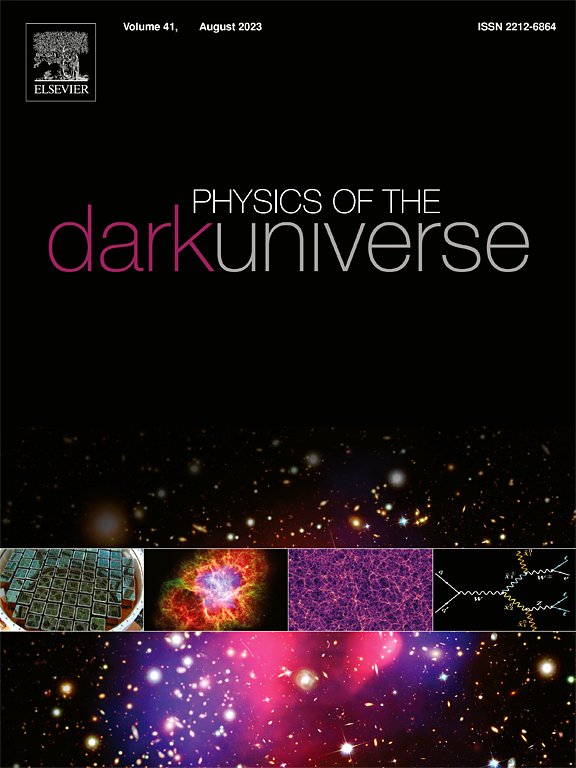爱因斯坦-卡坦引力理论中最小复杂模糊虫洞模型
IF 6.4
2区 物理与天体物理
Q1 ASTRONOMY & ASTROPHYSICS
引用次数: 0
摘要
在这项工作中,我们探索了在爱因斯坦-卡坦引力模型框架内构建由模糊暗物质支持的最小复杂虫洞几何形状的可能性。通过使用真实的Einasto密度剖面来模拟暗物质晕,我们揭示了暗物质分布如何形成和影响虫洞结构。物质含量是具有Weyssenhoff自旋贡献的各向异性流体,有效地包含了相对论各向异性能量动量张量中的量子自旋效应。通过求解场方程和Einasto剖面,确定了虫洞形状函数。然后,我们进一步探讨暗物质在决定虫洞重要物理特性方面的作用,如复杂性因子、状态方程、平衡状态、能量极限和有效引力质量。为了进一步补充我们的结果,包括详细的图形分析,说明暗物质如何决定这种极端时空几何的几何和物理可行性。本文章由计算机程序翻译,如有差异,请以英文原文为准。
Minimally complex fuzzy wormhole models in Einstein-Cartan theory of gravity
In this work, we explore the possibility of constructing minimally complex wormhole geometries supported by fuzzy dark matter, framed within the Einstein-Cartan gravity model. By using the realistic Einasto density profile to model dark matter haloes, we reveal how dark matter distributions can form and affect wormhole structures. The matter content is an anisotropic fluid with Weyssenhoff spin contributions, effectively including quantum spin effects in the relativistic anisotropic energy–momentum tensor. The wormhole shape function is determined by solving the field equations and the Einasto profile. We then probe further into the dark matter’s role in dictating important physical properties of the wormhole, such as the complexity factor, equation of state, equilibrium status, energy limits, and active gravitational mass. To further complement our results, a detailed graphical analysis is included, illustrating how dark matter can dictate the geometry and physical feasibility of such extreme spacetime geometries.
求助全文
通过发布文献求助,成功后即可免费获取论文全文。
去求助
来源期刊

Physics of the Dark Universe
ASTRONOMY & ASTROPHYSICS-
CiteScore
9.60
自引率
7.30%
发文量
118
审稿时长
61 days
期刊介绍:
Physics of the Dark Universe is an innovative online-only journal that offers rapid publication of peer-reviewed, original research articles considered of high scientific impact.
The journal is focused on the understanding of Dark Matter, Dark Energy, Early Universe, gravitational waves and neutrinos, covering all theoretical, experimental and phenomenological aspects.
 求助内容:
求助内容: 应助结果提醒方式:
应助结果提醒方式:


